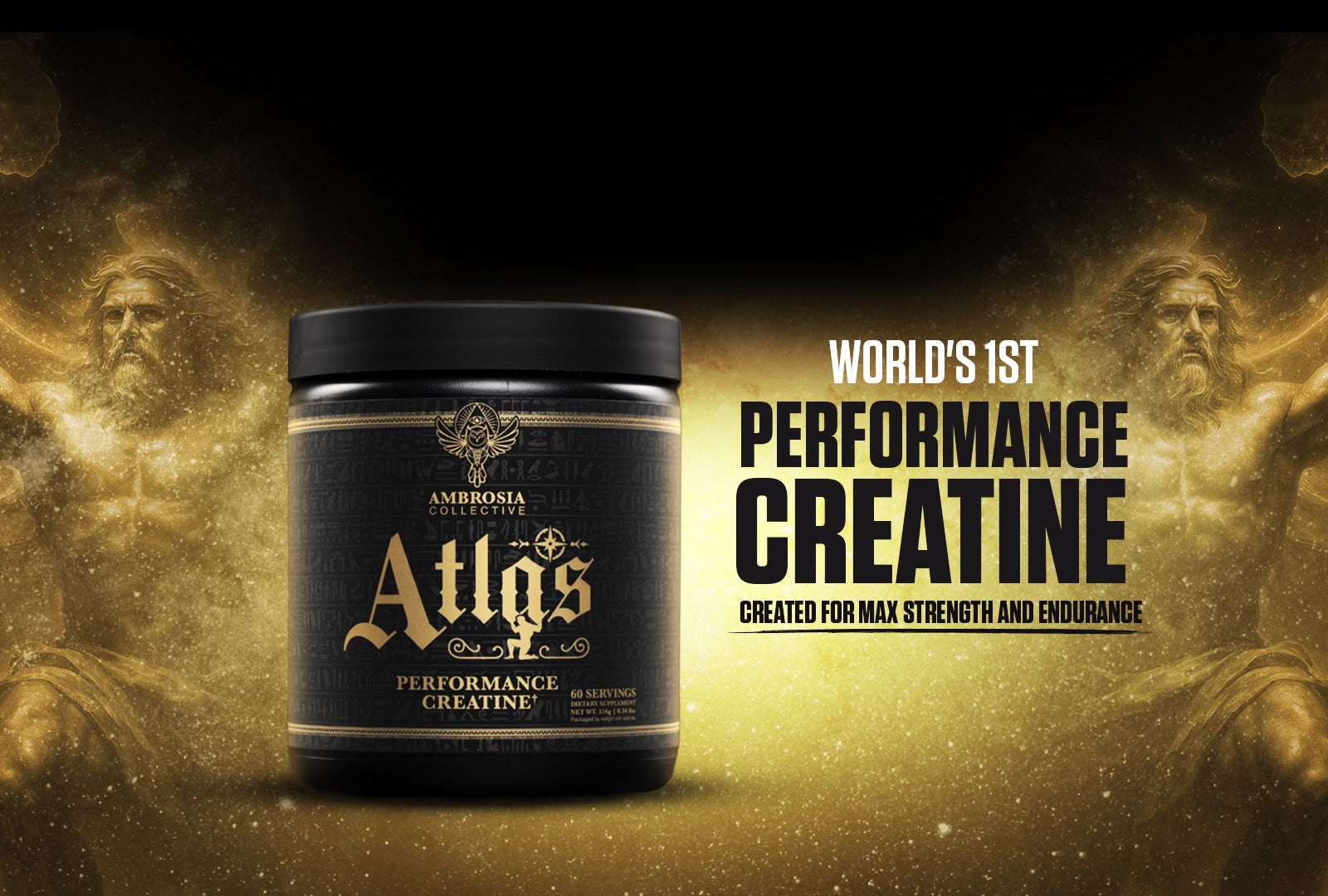Do you know how the Super Soaker was invented?
In 1982, NASA engineer Lonnie Johnson was working on developing a new type of refrigeration system. But it accidentally sprung a leak and shot a powerful stream of water across his garage. Johnson realized it could be used as a squirtgun and designed the first Super Soaker prototype. After selling Super Soaker distribution rights to Hasbro, Johnson also went on to invent the Nerf gun. Both of the brands have generated a combined $1 billion in sales.
It’s interesting how understanding the history of something can change your view of it and help you appreciate it more.
The same is true here in the supplement space. For example, did you know that

snake oil is real--and that it actually works? More on that below.
I want to use this article to show you how the supplement and vitamin industry was born, how we got to where we are today, and how it is intertwined with politics, food supply, science, legal concerns, our justice system, and much more.
Not only will this help us grasp how much we have learned about plant nutrients and the human body in just the last couple decades, but it will also give us a greater appreciation and understanding of how HPN and Ambrosia are able to produce such high-quality products.
Life and Fitness Before Vitamins and Supplements
Can you imagine what it would be like to go to the gym without pre-workout,

post-workout, protein supplements, creatine, and all the other incredible products that help us stay healthy and active?
Even just a few decades ago, the supplement landscape was dramatically different. Fewer people were interested in supplements and the products available were very simple.
In the absence of supplements, people were left with nutritional strategies composed of whole foods.
But the story of supplements and vitamins begins even further back in history.
Traveling Snake Oil Salesmen
In the late 1800’s thousands of Chinese immigrants came to the States as indentured laborers to work on the Transcontinental Railroad.
After working all day, the laborers could be seen rubbing a certain oil on their sore hands, feet, and joints.
It was a salve made from the oil of the Chinese water snake. Even more interesting, the oil was full of omega-3 fatty acids, specifically eicosapentaenoic acid (EPA).
In fact, this ancient snake oil actually has more omega-3 fatty acids than salmon.
The oil helped reduce inflammation and eased their aching joints and muscles. The Chinese immigrants shared the oil with the Americans, which created massive demand for the oil.
However, where there is demand there is also opportunity for unscrupulous individuals to capitalize on it.
The end of the 19th century saw the rise of something called “patent medicine.” It’s basically what it sounds like--medicine, mixtures, tinctures, and products that enjoyed protection by the government. But many of these products were never actually patented.
On top of that, these patent medicines were often concocted with ingredients

like heroine, cocaine, opium (laudanum), and alcohol.
Back to the snake oil, it turned out that Chinese water snakes were hard to find in California in the 1880’s. So people began to make their own oil using rattlesnakes, which some Native American tribes had been doing already.
Clark Stanley, a former cowboy, seized on this demand for snake oil. He began calling himself the Rattlesnake King and sold a brand of patent medicine called Clark Stanley’s Snake Oil Liniment.
He traveled around hucking his snake oil in wild, circus-like pitches, claiming it produced all kinds of medical and health benefits. He would even slice open live snakes, boil them, and extract the fat right in front of a live audience.
However, the federal government began to crack down on patent medicines with the passage of the Pure Food and Drug Act of 1906 as doctors began to decry the products as ineffective and fake.
A shipment of Stanley’s snake oil was seized and inspected. They found that his product was primarily made of mineral oil.
Consumers realized they had been tricked and it was around this time that the phrase “snake oil” became synonymous with hucksters and fraudulent salespeople.
This would be one of the earliest instances--but not the last--of this interaction between supplement manufacturers responding to popular demand and authorities playing “catch up” in an attempt to regulate new products coming into the market.
And still, in 2020, this is the case: from the very beginning consumption has always outpaced the science and regulation of supplements and vitamins.
The Supplement and Vitamin Industries Taking Off
The 1906 act was largely the first attempt of the federal government to regulate and intervene in what would become the $122 billion supplement and vitamin industry.
And what this first episode started to reveal was the fact that this new industry was incredibly complex at its very core.
These were products that were part of the food supply but were not actually consumed for the purpose of sustenance. On top of that, some of these products did possess therapeutic capabilities and the potential for consumers to exercise more independence and control over their health drove much of the demand for the products.
As consumer demand grew for these products, scientific discovery and studies were motivated to discover more new ingredients with the potential to benefit their customers.
By the first two decades of the 1900’s, research had begun producing the first marketable products derived from food nutrients. In 1900, the amino acid tryptophan had been isolated by Cambridge biochemist Frederick Gowland Hopkins. In 1912, Casmir Funk began calling nutrients that prevented deficiency diseases like scurvy “vitamines.”
Within the next few years other corporate labs and colleges like Yale and

Cambridge began isolating other vitamins including A, D, vitamin B complexes, biotin, and more.
These new products were snapped up by the American populace and a wave of excitement over these new developments swept the country.
At this point, the federal government began to step in again. The three agencies that had regulatory control over the supplements being sold were the Post Office, the Federal Trade Commission (FTC), and the Bureau of Chemistry (which would later become the FDA).
The Post Office was empowered because it could prevent postal fraud and the FTC because it could crack down on companies making false marketing claims.
But it was the Bureau of Chemistry that was really and truly empowered by the 1906 act. It was the first federal agency given the power to protect consumers.
And it was the 1906 law that began to outline what supplement and vitamin manufacturers could and could not do with their products.
Of particular importance, the 1906 act made the label on the supplement container a space where consumers could learn more about what was inside the products.
Manufacturers were required to list 11 specific ingredients if their product contained them, including: alcohol, morphine, opium, cocaine, and cannabis.
They were also prohibited from making false or misleading statements on their packaging.
By the 1920’s, pharmaceutical companies began advertising vitamins in popular magazines like Good Housekeeping, particularly targeting parents with products to help their children.

It was also during this time that the American Medical Association began condemning the use of vitamins as “quackery.”
By the 1930’s, the Bureau of Chemistry had transformed into the FDA and created a special department called the Vitamin Division just for the regulation of vitamins.
It was this division that began penalizing and seizing shipments from some vitamin and supplement manufacturers, including garlic tablets and cod liver oil to name only a few. Many of the lawsuits filed by the FDA and their analysis of the products revealed that the products did not actually contain the listed ingredients or were included at a much lower dosage than claimed.
Again we see the same pattern as the snake oil: consumer demand for supplements and vitamins drives research into new products; but companies overreach with their product claims and get slapped with lawsuits and fines.
Regulation of Supplements in 1994 through DSHEA
In 1938, the Pure Food and Drug Act of 1906 was replaced with an even more potent version called the Food, Drug, and Cosmetic Act. This gave the FDA more “teeth” to go after companies that made misleading or false claims about their products.
But over the next four decades the FDA would continue to revamp and revisit its perspective on supplements and vitamins. Meanwhile, the marketplace became more cluttered and crowded as consumers continued to demand access to the products despite warnings from the AMA and the FDA.
But then, in 1994, everything changed with the passage of the Dietary Supplement Health Education Act (DSHEA).
The act took a “laissez faire” attitude towards the supplements market, to a degree. It gave the government the power to act against products that were making misleading claims or were harmful. But other than that, the FDA and other regulators were required to essentially stand by.
Furthermore, the government would have the burden of proof to show that a supplement was adulterated.
This is also the law that required supplements to carry the phrasing “This statement has not been evaluated by the Food and Drug Administration. This product is not intended to diagnose, treat, cure, or prevent any disease.”
This is similar to the approach of the 1906 law that used the label as a tool for consumers to educate themselves on what they’re putting into their bodies.
This law also required companies to file petitions with the FDA for new ingredients. If a company was going to develop a new nutrient for sale, it would need to be revealed to the FDA along with evidence that would establish a “reasonable expectation of safety.”
cGMP Manufacturing
Another addition under the 1994 act was creating a set of good manufacturing practices for supplements. These practices would be based on food production and it put the responsibility for crafting safe products squarely on the shoulders of the manufacturers.
While the government would have the burden of proof to show that any supplement was adulterated, companies would need to make sure their products were created safely.
Independent Testing
However, one thing that the 1994 DSHEA did not require is for supplement companies to get their products tested or have their ingredients independently verified.
Since the 1994 law, there have been several very high profile supplement companies who were busted for contaminating their products, diluting the ingredients, or printing misleading claims on their labels.
The reason that many supplement makers do not test their products is because it is very expensive.
But as we’ve seen throughout the history of the supplement industry--there is a very clear pattern of overreaching on the part of companies.
This is exactly why HPN and Ambrosia have always invested in the absolute best and most expensive third-party, independent testing available.

Our products are NSF Certified for Sport. We also get as many products as we can tested by the BCSG--the Banned Substances Control Group--who also do drug testing for the Olympics.
This is why HPN and Ambrosia products are able to be used by US Olympians.
The process for getting our products tested is incredibly expensive and it also slows down our manufacturing process.
But as we’ve seen in the past, this is how we prove to you and all of our customers that we care about your health and safety.
If you have any questions about this or how we make our products, feel free to reach out to me. My DMs are open.









